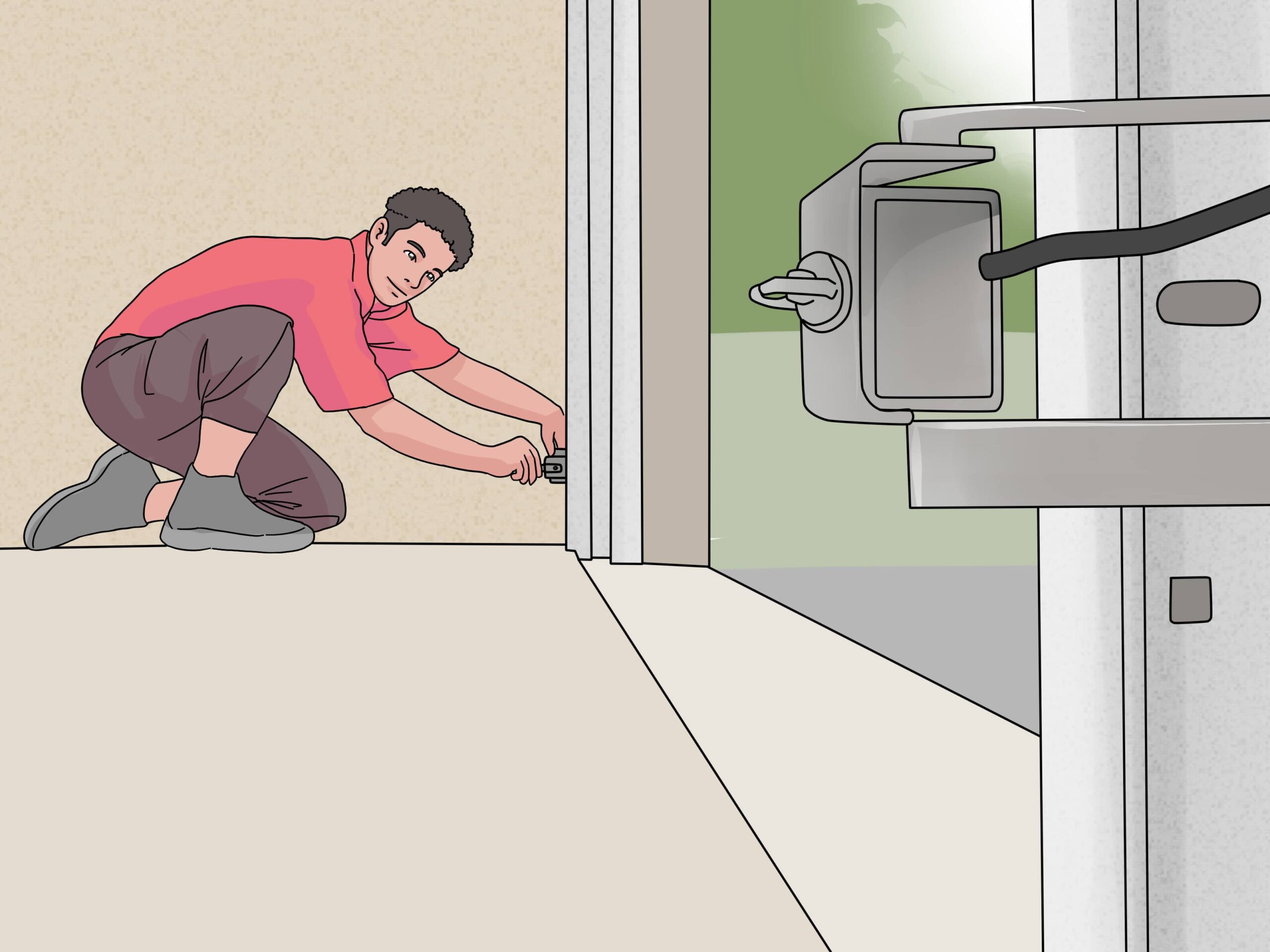
After you have a garage door put in place, it is necessary to connect it with an electric circuit for it to work and serve its function. This connection is primarily needed to bring power to the sensors so that they can detect the need to open or close the door.
But what if you want the garage door to function without the sensors? You may wonder whether that is possible. And yes it is. Keep reading this article to know how to wire the garage door without sensors.
How to Bypass or Disable the Sensors of Your Garage Door?
Since you want the garage door to function without the sensors, you would want to deactivate them or prevent them from detecting movements.
The below mentioned methods will keep your door opener working like normal without the sensors contributing to the function.
Using the Wall Button:
Pressing the wall button and not releasing it until the door touches the ground would help you shut the garage door with no role of the sensors whatsoever. Releasing the wall button once the door is in contact with the floor would prevent you from exposing the garage’s containments day in and day out.
Additionally, you will have no problem opening the garage door with the remote of the garage opener.
Connecting the Sensors Together:
Another way in which you can stop your sensors from functioning is by cutting the cable connection for them and then sticking them together with electrical tape. Most automatically functioning garage doors have a manual mode you can use to bypass the sensors.
Join the two sensors in such a way that the lights on them face each other and fasten them together using the black tape.
This will help both of them come in contact with each other without any obstructions since both will be reviewing the signal they should. This will further allow the garage door opener without the sensors in the required position.
What is the Need to Wire Garage Doors Without Sensors?
There can be several reasons why you want to stop the sensors from performing their task and wire the garage door without them. They can be giving you a hard time by causing major inconvenience in daily activity.
Damage by Sun:
The sensors might not be working due to the sunlight playing tricks on it. This may cause the door to remain open all the time and may propel you to do nothing but go on without sensors.
Faulty Sensors:
You may experience the garage door moving down normally until suddenly it starts moving back up and the lights on the opener unit start to flash. Even though there are no obstruction, the garage door can’t simply be made to shut down.
This definitely points to non-functional sensors and a temporary way to overcome them is by giving them some rest and not using them for a while.
Unorderly Alignment:
It may be that one of the sensors is not in sync with the other which may lead to faulty and inadequate functioning. Due to misalignment, the infrared beam that is meant to strike the opposite sensor fails to do so which prevents the garage door from moving down, thanks to this disorder.
The lights on the sensors may not respond or keep blinking, leaving you no alternative but to disconnect the sensors.
Wiring Gone Haywire:
All types of wires surrounding the sensor and one of them goes out of order or is somehow displaced, and the whole mechanism comes crashing down. Furry friends or animals as small as insects may disturb the wiring, resulting in a stunted function and you taking the sensors down.
Is it the Ultimate Solution?
Using the garage door without sensors is, no doubt, a relieving experience and not troublesome in the least. However, using the sensors is not that bad an idea. The sensors would only amp up the quality and improve the functioning of the entire system.
They would provide the necessary safety and prevent injuries by a huge amount from your heavy garage doors and also save your loved ones from being a casualty.
Hence, although working without sensors may be just fine, working with them is definitely a plus you would not want to miss. Therefore, replace those faulty sensors to enjoy an enriching experience in the long run.
Conclusion:
If your sensors are somehow not working enough and giving their best, there is no choice but to deactivate or pass by them without letting them activate until they are set right or replaced. The above mentioned techniques can be of great service to you and allow you to operate your garage door without the sensors.
This will restore the smooth operation of the garage door and give the user much needed temporary relief. The owner will be able to successfully secure the stuff stored in the garage and not worry about thefts and trespassing or any sort.
FAQs
What type of circuit is needed for garage wiring?
A garage door opener requires a 15 to 20 amp and 120 volt electric circuit. This circuit must be on a GFCI protected outlet; all garage openers ought to have a dedicated circuit.
What type of wire is needed to wire a garage door ?
A thermostat wire or other cables equivalent to it can be utilized when you need to wire a garage door. The more power the entire system requires, the thicker the wire should be.
How many wires are needed to operate a garage door opener?
The number of wires you use can be arbitrary. However, typically 3 wires- 1of the 2 going to each of the sensors while 1 going to the button.
For a without sensor operation, the 2 wires going to them need to be disconnected.